The sale of the 31.68-carat, sunset-hued stone was part of Sotheby’s first series of events and auctions in Abu Dhabi.
How GIA Is Changing Its Reports for Lab-Grown Diamonds
The lab has dropped the word “synthetic” from the document and added standard scales for reference.

Carlsbad, Calif.—The Gemological Institute of America is tweaking the grading reports it issues for man-made diamonds, dropping the word “synthetic” but still not using the same scale it does for natural diamonds.
Beginning July 1, the GIA Synthetic Diamond Grading Report will become the GIA Laboratory-Grown Diamond Report. The word “synthetic” also will be removed from the “Identification” line, replaced with the words “laboratory-grown.”
The elimination of synthetic is in keeping with recent revisions the Federal Trade Commission made to its Jewelry Guides, removing the word from its list of recommended terms for lab-grown diamonds because of “the likelihood of consumer confusion.”
GIA also is now including the standard color, clarity and cut grading scales on the reports, but for reference purposes only; the lab still will not apply the scales it uses for natural diamonds to man-made stones.
As the lab has done since it first started offering reports for man-made diamonds in January 2007, it will use: colorless, near colorless, faint, very light and light to report color grades on man-made diamonds, not D-Z.
However, colorless, near colorless, etc. will be listed alongside the D-Z scale so consumers can see, for example, that a near-colorless lab-grown diamond is the equivalent of a natural diamond that’s graded between G and J.
For clarity, GIA will continue to use: flawless, internally flawless, very very slightly included, very slightly included, slightly included and included.
Like color, these terms will appear alongside the standard clarity grade scale for reference. A very very slightly included lab-grown diamond, for example, is equal to VVS1 or VVS, while a lab-grown diamond graded as slightly included is like an SI1 or SI2 mined diamond.
The GIA scale for cut grade, which ranges from excellent to poor, also is included on the new lab-grown diamond report. GIA always has used the same cut-grade terms for both natural and lab-grown diamonds.
When asked why it opted not to grade lab-grown diamonds exactly liked mined stones—as HRD Antwerp just did—the lab gave essentially the same reasons Executive Vice President and Chief Laboratory and Research Officer Tom Moses did when interviewed by National Jeweler in October 2016.
“Laboratory-grown diamonds do not have the same range of color as mined diamonds and are generally grown to be as close to colorless as possible or are treated post-growth to make them colorless or near colorless,” GIA said when asked about the changes this week.
“This is why GIA uses words rather than letters (for example D-Z) or abbreviations (for example VVS and SI2) to report grades for color and clarity of laboratory-grown diamonds.”
The lab also noted that it made the changes it did to “provide more information to consumers.”
Also on the Laboratory-Grown Diamond Report, GIA said it will disclose all detected clarity treatments and include the following statement regarding possible color treatment: “This is a man-made diamond produced by CVD (Chemical Vapor Deposition) or HPHT (High Pressure High Temperature) growth processes and may include post-growth treatments to change the color.”
GIA said the previous reports for man-made diamonds also noted any clarity treatements. Color treatments also were disclosed for a time, though the Synthentic Diamond Grading Report did not include the above general statement that will appear on the new reports.
Any GIA Synthetic Diamond Grading Report issued since Jan. 1, 2018, can be returned and exchanged for the new Laboratory-Grown Diamond Report at no cost.
The price of a GIA Laboratory-Grown Diamond Report is the same as a GIA Diamond Grading Report, and, like the natural diamond reports, the QR code on the lab-grown reports link to GIA’s online Report Check Service. The report check record for man-made diamonds will include educational information about the CVD and HPHT diamond-growing processes.
The topic of lab-grown diamond grading stirs debate in the industry, with some questioning why GIA does not just grade lab-grown diamonds the same way as it does natural diamonds, since they share the same chemical, optical and physical properties and are, in fact, diamonds.
It is the approach HRD Antwerp took, with the Belgian lab noting the need for “better transparency” in an age when the man-made stones are becoming more prevalent.
Others, however, agree with GIA’s stance, citing the need for differentiating lab-grown diamonds from mined ones and the lack of color and clarity range in the man-made material.
The Latest

Most customers who walk into your store this month have made up their minds. Your job is to validate their choice, Emmanuel Raheb writes.

The collection features characters and motifs from Ukrainian folklore, including an enchanted mirror and a magic egg.

How Jewelers of America’s 20 Under 40 are leading to ensure a brighter future for the jewelry industry.

MatrixGold 3.11, the newest version of the jewelry design program, offers more flexibility, precision, and creative control.


The pavilion will be part of the 2026 JA New York Spring show, scheduled for March 15 to 17.

Kadet, a 1994 National Jeweler Retailer Hall of Fame inductee, helped grow the family-owned retailer in the Chicago area and beyond.

Roseco’s 704-page catalog showcases new lab-grown diamonds, findings, tools & more—available in print or interactive digital editions.

Billed as the world’s smallest wearable, Lumia Health’s new smart earrings have a health tracker subtly embedded in the back.

Don’t let those with December birthdays feel blue. Help them celebrate their month with blue zircon, turquoise, and tanzanite.

The new pink sapphire version of the piece dances with its wearer in the brand’s “Icons After Dark” holiday campaign.

A choice that’s generated a lot of commentary, Pantone says “Cloud Dancer” marks a fresh start and encourages relaxation and creativity.

The manufacturer’s holiday campaign features a gift guide filled with trending designs and jewelry that can be personalized.

The man was charged with theft, accused of ingesting the necklace while in a jewelry store in Auckland, New Zealand.
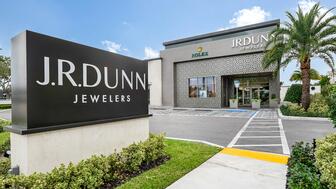
The Florida independent expanded its store from 8,000 to 14,000 square feet, fulfilling the vision of its late co-founder, Jim Dunn.
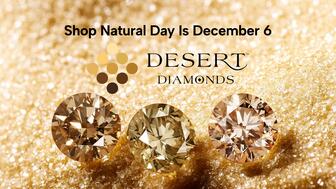
Sponsored by De Beers Group

The classic 5600 series G-Shock has been scaled down to about a tenth of its size, becoming a fully functioning watch ring.

The association’s annual conference and gala will take place Feb. 4, 2026, during the Tucson gem shows.
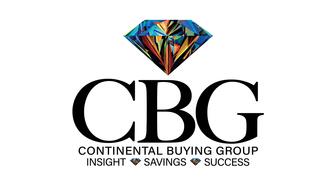
The January show will include a workshop for jewelry retailers on implementing AI to strengthen their businesses.

Fellow musician Maxx Morando proposed to the star with a chunky, cushion-cut diamond ring designed by Jacquie Aiche.

The retailer, which sells billions in fine jewelry and watches, is suing the Trump administration and U.S. Customs and Border Patrol.
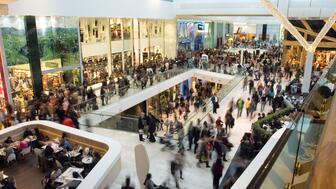
Black Friday is still the most popular shopping day over the five-day holiday weekend, as per the National Retail Federation’s survey.

The historic egg, crafted for Russia's ruling family prior to the revolution, was the star of Christie’s recent auction of works by Fabergé.
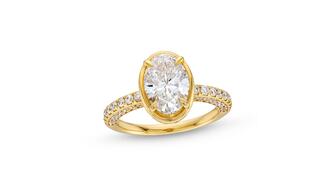
The retailer offered more fashion jewelry priced under $1,000, including lab-grown diamond and men’s jewelry.
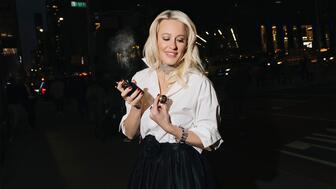
The eau de parfum is held in a fluted glass bottle that mirrors the decor of the brand’s atelier, and its cap is a nod to its “Sloan” ring.

Vivek Gadodia and Juan Kemp, who’ve been serving as interim co-CEOs since February, will continue to lead the diamond mining company.

In addition, a slate of new officers and trustees were appointed to the board.



























